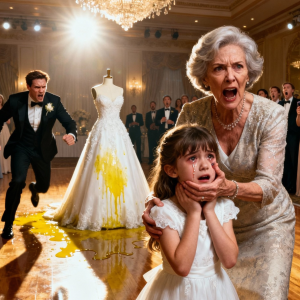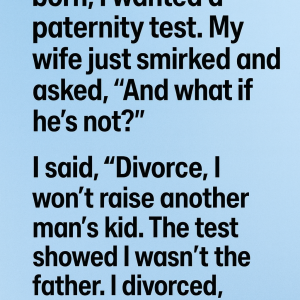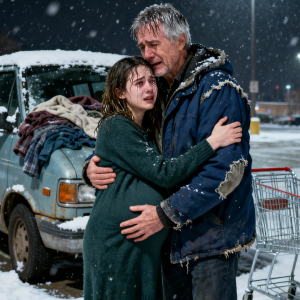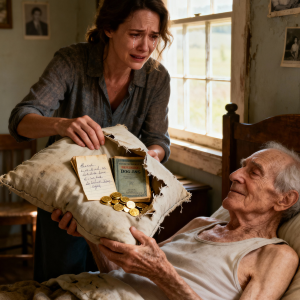One afternoon, my five-year-old daughter came home from kindergarten, dropped to her knees in front of me, and clung to my hands with her tiny fingers. Tears streamed down her face as she begged, “Mommy, please… don’t send me back.”
She was shaking so hard she couldn’t speak — but the terror in her eyes told me everything. That’s when I grabbed my phone… and dialed 911.
It happened on a quiet Wednesday in late September. The weather was warm, I was at the kitchen counter scrolling through work emails, and the house was still. I heard the front door open — the soft click I’d heard a hundred times when my daughter, Lily, came home from school, usually singing or skipping down the hall.
But this time, there was nothing. No sound at all.
I turned and saw her standing by the doorway, frozen, her backpack sliding off her shoulder. Her brown hair was tangled, her cheeks damp from crying. Before I could speak, she stumbled forward, fell to her knees, and wrapped her trembling hands around mine.
“Mommy, please… don’t make me go back,” she whispered, voice cracking. Her whole body shook. Lily was gentle, sensitive — but she had always adored school. So this wasn’t a tantrum. This was fear.
I knelt down, held her tight. “Honey, tell me what happened.” But she could only sob, burying her face into me.
And something inside me snapped — a sharp, gut-deep instinct telling me that whatever happened at that school had made my daughter feel unsafe. Truly unsafe.
I didn’t ask more questions. I didn’t try to calm her down. I didn’t wait to see if I was “overreacting.”
My hands shook as I picked up my phone.
I called 911.
The dispatcher answered calmly, “911, what’s your emergency?”
“My daughter—” My voice broke. “She came home terrified. I don’t know what happened, but something is wrong.”
Within minutes, two officers arrived: Officer Daniels, steady and gentle, and Officer Lee, a young woman with warm eyes. They entered the house quietly, careful not to overwhelm Lily.
Officer Lee crouched a few feet away. “Hi, sweetheart. I’m Norah. You’re safe here, okay? You don’t have to talk until you’re ready.”
After a long silence, Lily lifted her head. “I don’t want to go back to school.”
“Can you tell me why?” Lee asked softly.
Lily didn’t speak — she just reached into her backpack and handed me a folded drawing. Her hand trembled.
It wasn’t a normal kindergarten doodle. No colors. No smiles. Just heavy dark scribbles over a crude drawing of a classroom. In the corner, a tall figure loomed over a smaller one crying. Above it: “Ms. Kendall.”
My stomach dropped.
The officers shared a troubled look.
“Lily,” Lee said gently, “did someone scare you? Did someone at school hurt you?”
Lily’s eyes filled, and she nodded.
A cold, sickening wave rushed through me.
Officer Daniels stood. “Ma’am, we’ll need to file a report. This needs to be investigated immediately.”
The next day, detectives from the child protection unit contacted me, asking to interview Lily at a child-friendly forensic center. I watched from behind a one-way window as a specialist named Sandra spoke with her softly, surrounded by toys and bright colors.
Slowly, piece by piece, Lily opened up.
She told them about Ms. Kendall — her kindergarten teacher. The woman I had met at orientation, cheerful and energetic.
But behind closed doors, Lily said, she screamed at kids, grabbed their arms, locked Lily in the supply closet for “being too slow,” threatened to tell me she had a “bad daughter,” and punished any child who cried.
My gentle daughter had become a target.
By the end of the interview, detectives had enough to act. Ms. Kendall was suspended. Other parents were contacted. More children shared similar stories. Lily wasn’t the first — just the first whose fear was finally noticed.
That night, after tucking her in, she whispered, “Mommy… I’m safe now, right?”
I kissed her forehead. “Yes, baby. You’re safe. And you’re never going back.”
This isn’t just my daughter’s story. It’s a reminder: trust your instincts. And let every child know — their voice matters.




